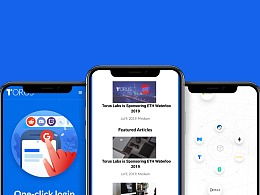Understanding the Basics of Website for Adsense

Are you looking to monetize your website with Google AdSense? If so, you’ve come to the right place. In this article, we’ll delve into the ins and outs of creating a website that’s optimized for Adsense. Whether you’re a beginner or an experienced webmaster, this guide will provide you with valuable insights to help you maximize your earnings.
Choosing the Right Niche

One of the most crucial aspects of creating a website for Adsense is selecting the right niche. Your niche should be something you’re passionate about and that has a large audience. Here are some tips for choosing a profitable niche:
-
Research popular keywords and topics in your chosen field.
-
Look for niches with high search volume and low competition.
-
Consider your expertise and interests when choosing a niche.
Optimizing Your Website for Adsense

Once you’ve chosen your niche, it’s time to optimize your website for Adsense. Here are some key factors to consider:
-
High-quality content: Your website should have a wealth of informative and engaging content that appeals to your target audience.
-
Mobile optimization: With the increasing number of mobile users, it’s essential to ensure your website is mobile-friendly.
-
Page speed: A fast-loading website provides a better user experience and can help improve your Adsense earnings.
-
SEO: Implementing SEO best practices can help improve your website’s visibility in search engines, attracting more traffic and potential ad clicks.
Creating an Adsense-Friendly Layout
The layout of your website plays a significant role in determining how well your Adsense ads perform. Here are some tips for creating an Adsense-friendly layout:
-
Place ads in high-traffic areas: Placing ads above the fold, in the sidebar, and at the bottom of your pages can increase their visibility and click-through rates.
-
Use appropriate ad sizes: Choose ad sizes that complement your website’s design and don’t overwhelm your content.
-
Avoid clutter: Keep your website clean and uncluttered to ensure your ads stand out.
Understanding Adsense Policies
Before you start displaying Adsense ads on your website, it’s crucial to understand the Adsense policies. Here are some key points to keep in mind:
-
Content quality: Your website must have high-quality, original content that provides value to your audience.
-
Ad placement: Ads must be placed in a manner that doesn’t interfere with user experience.
-
Prohibited content: Your website must not contain prohibited content, such as adult material, illegal activities, or hate speech.
Monitoring Your Adsense Performance
Once your website is up and running, it’s essential to monitor your Adsense performance. Here are some tips for tracking your earnings:
-
Use the Adsense dashboard: The Adsense dashboard provides valuable insights into your ad performance, including impressions, clicks, and earnings.
-
Analyze your ad placements: Experiment with different ad placements and formats to find what works best for your website.
-
Keep an eye on your website’s traffic: Higher traffic can lead to increased ad revenue.
Table: Adsense Ad Formats
| Ad Format | Description |
|---|---|
| Text Ads | Standard text-based ads that can be placed anywhere on your website. |
| Image Ads | Ads that consist of images, which can be placed alongside text ads. |
| Rich Media Ads | Interactive ads that can include videos, animations, and other multimedia elements. |
| Responsive Ads | function pinIt() { var e = document.createElement('script'); e.setAttribute('type','text/javascript'); e.setAttribute('charset','UTF-8'); e.setAttribute('src','https://assets.pinterest.com/js/pinmarklet.js?r='+Math.random()*99999999); document.body.appendChild(e); }
